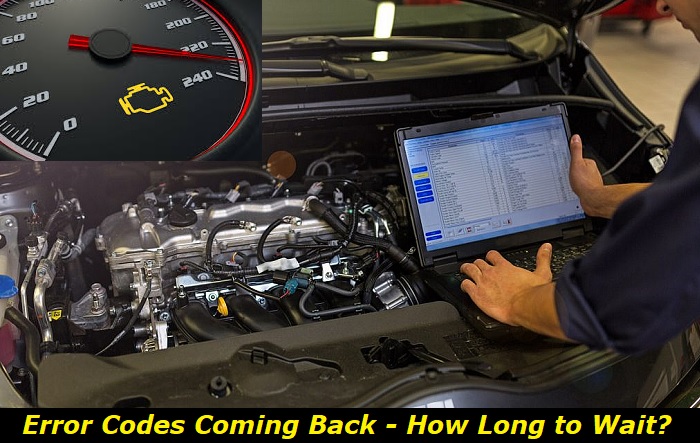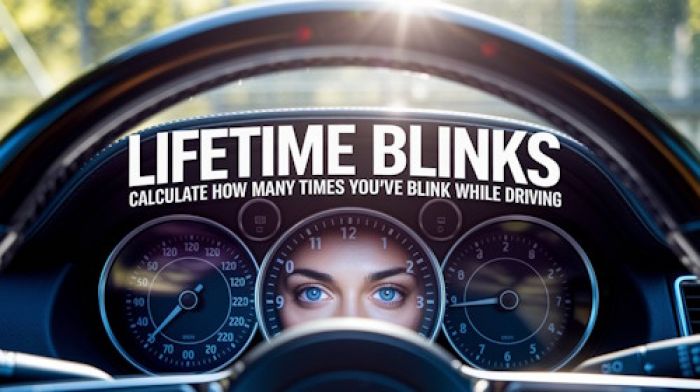Codes that have been cleared and whose related faults haven't been resolved can come back or get logged almost immediately, in a matter of days, or after some weeks. They can be produced as soon as you start your car, scan the vehicle, or the vehicle experiences a related fault.
Clearing the DTCs highlights
- Difficulty level:Low
- Needed scan tools:Professional tool or app
- Additional equipment:No other tools needed
- Timeneeded:10-15 minutes
- Price in a shop:$150 - $250
- DIY repair:Possible

Why or When Diagnostic Trouble Codes Return After Clearing Them
This section explains various factors that can trigger the reappearance of a DTC.
1) Vehicle Manufacturer, Edition, and Fault
The period it will take for a diagnostic trouble code to come back is determined by your car's make and model year. It's also dependent on the type of vehicle problem that was addressed.
2) Timing
Some cases may involve the code popping up (and warning indicator coming on) right after a clearance. How annoying would that be to the auto repairer? Some other code types may take days or weeks to get logged into your car's computer again. That's probably the time it took for the problem to resurface again.
3) Presence of a Fault and Scanning Device
Clearing a check engine light (CEL) DTC will switch off the warning indicator temporarily. But the code, as well as the alert, will both return when the issue that got it logged into the vehicle's computer hasn't been rectified or fixed. It may also show up once you hook up a scanning device to your car.
4) Distance Covered
Driving for some miles can also be enough to log a specific code again after erasure. It's usually 50-100 miles on average.
5) Vehicle Restart and Battery Reset
Switching off and turning on the vehicle (restarting) can make the codes reappear. The same goes for when you do a battery reset, that is, disconnecting and reconnecting the battery.
A code can come back after a specific number of cycles, that is, switching the vehicle on and off. It could take 10-20 cycles for this to take place.
Note: A battery reset could make a DTC or error go away, depending on the vehicle type.
The above factors would most likely not have any influence over the appearance of the codes if the fault, abnormality, or situation has been dealt with. This is why there's a need to address vehicle faults without delay.
You're not only trying to get rid of those error codes. You're also preventing a situation from getting worse due to neglect or procrastination. Other parts or areas of the vehicle could begin to get defective. And that will mean more problems for you. That's more error codes and indicator/warning lights to worry about.
DTCs That Persist or Go Away Automatically
A warning light such as the CEL may continue to come on sometimes, even after the codes have been erased. It shows that the problem is a significant one that needs to be resolved urgently. And the DTC will reappear after some time, of course. You should do the following to fix and prevent such a peculiarity.
1) Troubleshooting
DIY troubleshooting can be done if you possess adequate knowledge and equipment for vehicle OBD2 diagnostics and physical checks. For example; the access to and technical know-how for code reader or sophisticated scanner usage.
Having your personal code reader will enable you to read and erase DTCs on your own without professional help which you have to pay for. Code readers can give insightful data into the fault being investigated.
You'll be saving time with this investment, apart from good money. It will also help in avoiding unnecessary physical checks or fixes as well as auto repairer scams and paid services.
Investigate the likely triggers of the error based on the symptoms observed and the indicator/warning light that's illuminating. All related vehicle parts to the fault should be kept in mind.
However, you should allow an expert to take charge if the situation of you don't understand anything about what's happening. A reputable auto repairer should be your target. And it should have sophisticated scanners equipped for a better service.
2) Routine Maintenance
Avoid the reappearing errors by adhering to regular vehicle maintenance guidelines as directed by the manufacturer. Check the vehicle owner's manual for instructions on this and follow every requirement with dedication. Regular maintenance is better than having to deal with error code hassles.
3) Maintain Proper Records of the Codes
Note down every error code that pops up on the scan results for future reference. Write down their meanings, corresponding repairs, time, and so on. For example; the time of scan results, reappearances, etc. The notes will be useful in recognizing past codes, explaining to your mechanic, and so on.
A DTC may go away on its own when you fix the fault or condition that activated it. For instance, an underperforming catalytic converter triggering the CEL to come on because of too much "stop-and-go" movement.
The code and warning light will be deactivated once your driving pattern changes and the catalytic converter does more work. But you should be worried about a potentially unnoticed fault if the indicator light and DTC return.
Types of Vehicle Diagnostic Codes
Diagnostic trouble codes are stored in a vehicle's computer memory. Various types can be activated in your car when a fault or unusual situation is discovered. Some of them are required by regulations to be available on cars. This section explains the categories and types.
1) Standard (Generic) Codes
These are sometimes referred to as P codes. They're a group of standardized DTCs that trigger the CEL to come on. P codes are readable on vehicles that have OBD2 compatibility, no matter the make and model year. They're required by law to be enabled on OBD2 vehicles.
Standard DTCs typically entail errors that are related to a car's engine and emissions parts. See the three types of standard codes below.
- Confirmed Codes
These alert car users to an abnormality the vehicle has that calls for a solution. For example, the temperature sensor detecting a risky increase or decrease in the readings and logging in an error code to let you know.
- Pending Codes
These codes won't activate the CEL, but they alert the vehicle user to an abnormality that doesn't pose danger yet. In other words, the occurrence isn't actually regarded as problematic.
- Permanent Codes
Permanent DTCs are the code types that we mentioned in the first paragraph of the introduction for later elaboration. They're special DTCs that are being introduced in recent model cars. And they can't be cleared using a scan tool.
Permanent codes can only be erased when a solution has been implemented for the fault or problem. They'll clear themselves after. This code type typically covers vehicle parts that handle emissions control.
Enough data must have been collected by the vehicle's computer to be sure that it's OK to erase the error. The data will be compiled during various vehicle usage conditions. For example; starting, idling, driving, speeding, stopping, etc.
2) Enhanced (Manufacturer) Codes
These codes deal with all other systems apart from the engine. For example; P (powertrain-related) codes, C (chassis) codes, B (body) codes, and U (computers/electrical) codes.
They're different based on the car maker and can't be read by generic scanners. You'd have to use one that's compatible with the vehicle or designed only for its make or model (model year). Enhanced codes include the following car systems and more:
- Transmission
- Transfer case/AWD/4WD
- HVAC (heating, ventilation, and air conditioning)
- ABS (anti-lock braking system)
- BCM (body control module)
- Airbags/SRS (supplemental restraint system)
- Stereo
3) History/Historical Codes
Some DTCs come with a "History" or "Historical" label. Such a tag points to an error that's been an issue since the last error clearance, but is no longer a problem. For example, an engine firing fault that was supposed to log in a code but isn't happening anymore.
Conclusion
Car owners need to understand how to clear error codes with the aid of code-reading devices and also get rid of recurring ones. Sometimes, a multi-purpose scanner will be all you need to fix a fault.
The purchase of a sophisticated scan tool with multiple vehicle compatibility is a good investment. But you could opt for a basic code reader if affordability is an issue. Advanced code readers can clear codes and perform other functions related to taking care of such error codes. For example, recalibration of certain systems.
About the authors
The CarAraC research team is composed of seasoned auto mechanics and automotive industry professionals, including individuals with advanced degrees and certifications in their field. Our team members boast prestigious credentials, reflecting their extensive knowledge and skills. These qualifications include: IMI: Institute of the Motor Industry, ASE-Certified Master Automobile Technicians; Coventry University, Graduate of MA in Automotive Journalism; Politecnico di Torino, Italy, MS Automotive Engineering; Ss. Cyril and Methodius University in Skopje, Mechanical University in Skopje; TOC Automotive College; DHA Suffa University, Department of Mechanical Engineering






Add comment